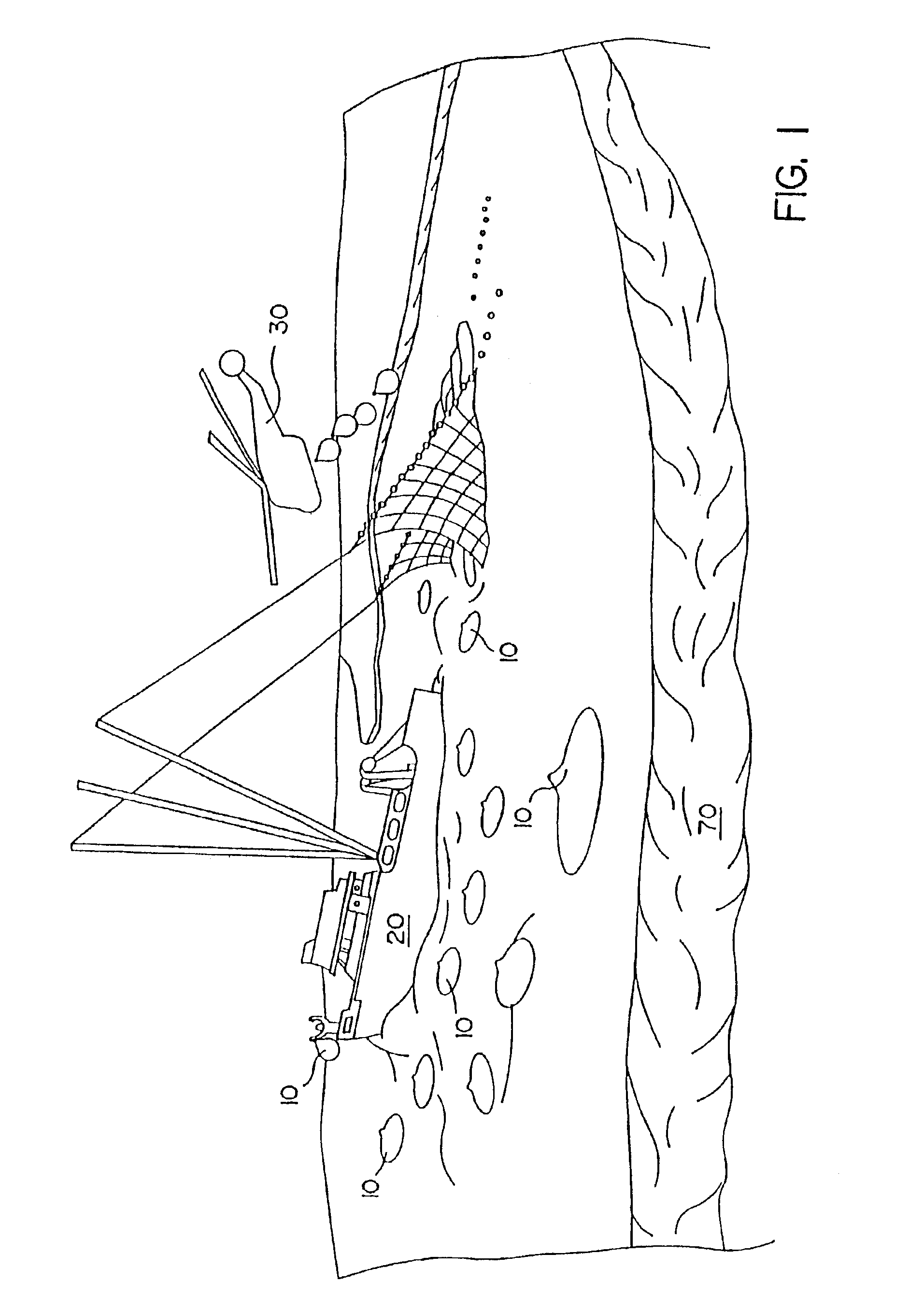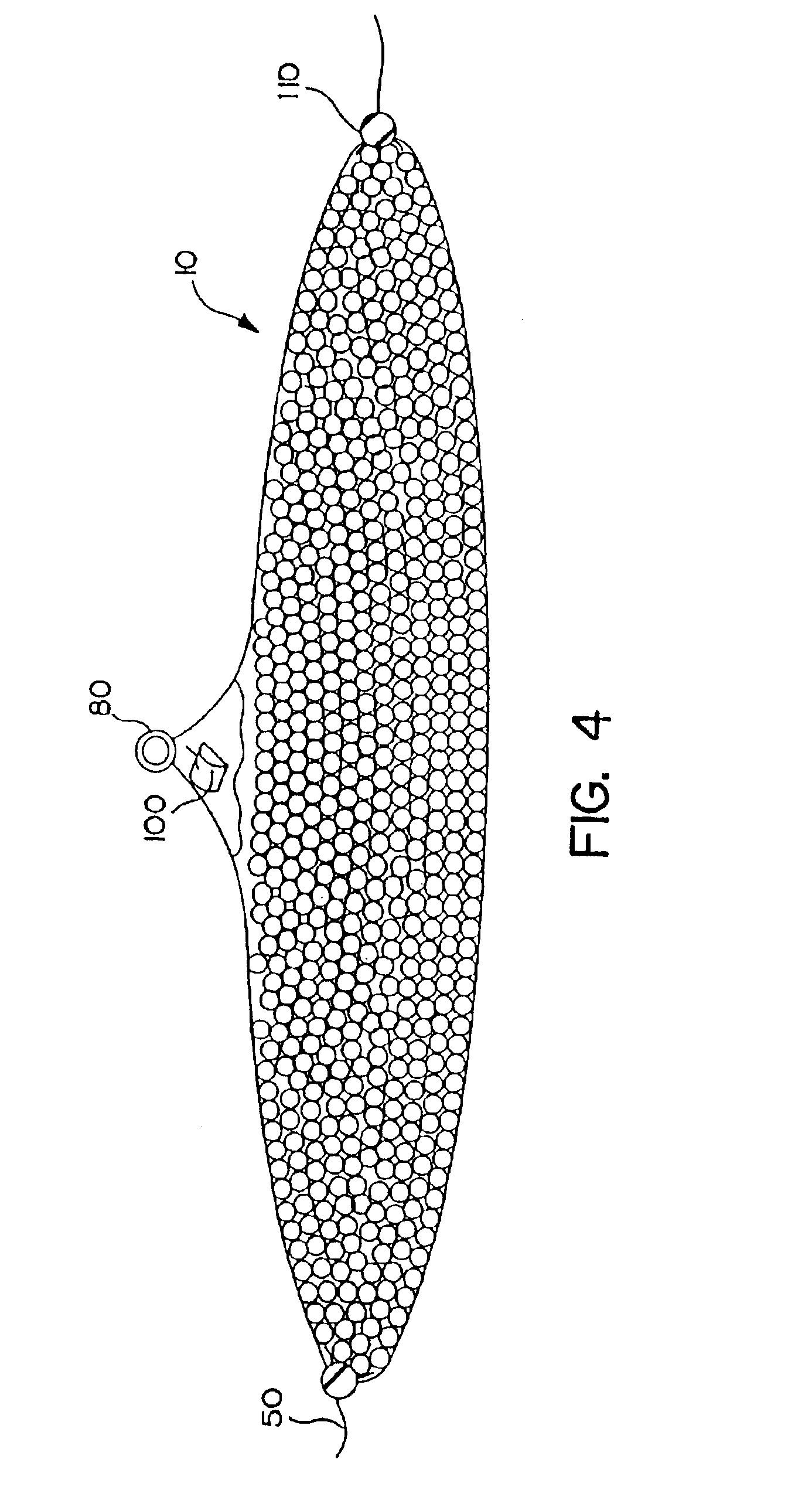Process of forming oil-absorbent bodies
a technology of oil-absorbent bodies and oil-absorption tanks, which is applied in the direction of water/sewage treatment by substance addition, hydraulic engineering, construction, etc., can solve the problems of large annual costs both financially and physically, and the number of units of specialized equipment cannot be easily transported, so as to achieve the effect of effectively containing water-borne oil spills
- Summary
- Abstract
- Description
- Claims
- Application Information
AI Technical Summary
Benefits of technology
Problems solved by technology
Method used
Image
Examples
Embodiment Construction
[0042]The system includes the application to the oil spill of hundreds or thousands of sacks containing a quantity of appropriately formed bodies comprising copolymer-based materials that are known to absorb and entrap crude or refined hydrocarbon products, including crude oil of any viscosity and gasoline or other refined fuels. For purposes of this application, the term “oil” refers to any hydrocarbon material.
Sack Deployment
[0043]FIG. 1 illustrates an oil spill and certain deployment and retrieval activities in accordance with the invention, including a plurality of the inventive containers, referenced as sacks 10. To simplify the application, a number of different activities are shown in FIG. 1, although in practice, many of those activities may take place at different times or in different locations. In FIG. 1, a number of sacks 10 are shown being applied to an oil spill. The containers are designed for easy application from floating platforms or ships, as shown at the left of ...
PUM
| Property | Measurement | Unit |
|---|---|---|
| temperature | aaaaa | aaaaa |
| temperature | aaaaa | aaaaa |
| height | aaaaa | aaaaa |
Abstract
Description
Claims
Application Information
 Login to View More
Login to View More - R&D
- Intellectual Property
- Life Sciences
- Materials
- Tech Scout
- Unparalleled Data Quality
- Higher Quality Content
- 60% Fewer Hallucinations
Browse by: Latest US Patents, China's latest patents, Technical Efficacy Thesaurus, Application Domain, Technology Topic, Popular Technical Reports.
© 2025 PatSnap. All rights reserved.Legal|Privacy policy|Modern Slavery Act Transparency Statement|Sitemap|About US| Contact US: help@patsnap.com



